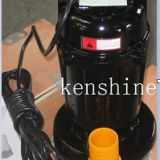QBW hygienic pneumatic diaphragm pump
USD $600 - $8000 /Set
Min.Order:1 Set
Quick Details View All >
Product Details
QBW Hygienic pneumatic diaphragm pump has the advantages of no sealing, explosion-proof, low shear, easy maintenance, idling, light weight, self-priming and so on. It also has excellent hygienic performance and can satisfy food and beverage and pharmaceuticals etc. high-level health work requirements.
Advantage:
1.The flow parts of QBW pneumatic diaphragm pump is made of stainless steel material (SS304, SS316,SS316L) with hygienic/sanitary food grade requirements.
2. Pump uses precision casting. The surface is smooth and tidy and has a higher strength.
3. Valve ball is further processed by a special machine, which has high roundness and good sealing performance.
4. Accurately calculate the moving distance of the diaphragm to reduce the force of the diaphragm and have a longer service life.
5. Four bolt connection design, good sealing performance, the actual dry suction can reach 0-4 meters.
6. Three-section upper and lower cover, flexible installation.
7. The integrated design of the diaphragm retaining block has excellent pressure resistance and high temperature resistance and is widely used in food, alcohol, daily chemical, beverage industry.
8. Connecting rod of the diaphragm is made of wear-resistant stainless steel, which has better corrosion resistance and longer life.
Working principle:
A flexible diaphragm is installed in each of the symmetrical working chambers of the hygienic diaphragm pump. The connecting rod connects the two diaphragms together. After the compressed air enters the valve chamber from the intake joint of the pump, the diaphragm in the two working chambers is pushed forward. Synchronized motion of diaphragm driven by connecting rod. At the same time, the gas in another working chamber is discharged from the back of its diaphragm to the outside of pump. When the piston reaches the end of the stroke, the valve mechanism automatically introduces compressed air into another working chamber, pushing the diaphragm pump to move backwards, thus forming a synchronous reciprocating motion of the two diaphragms. Two one-way ball valves are installed in each working chamber. The reciprocating motion of the diaphragm results in the change of the volume of the working chamber. The two one-way ball valves are opened and closed alternately, so that the liquid can be continuously inhaled and discharged.
The air distribution valve structure eliminates the traditional "O" ring and cylindrical valve structure and adopts three-way pilot to eliminate dead point of and pump stopping. The correct and reliable commutator signal is provided to avoid downtime and faster commutator is provided to the pump with greater flow, providing a transmission performance with smaller pulses and more stable flow.
Model | Inlet/ outlet (mm) | Flow | Head | Max. Suction height | Max.allowed grains diameter φ(mm) | Air pressure (kgf/cm2) | Air compressor |
QBW-20 | 25 | 0-1.5 | 0-50 | 5 | 2 | 2-7 | 2.2 |
QBW-25 | 25 | 0-2.4 | 0-50 | 5 | 2.5 | 2-7 | 2.2 |
QBW-32 | 38 | 0-6 | 0-50 | 7 | 3.2 | 2-7 | 5.5 |
QBW-40 | 38 | 0-8 | 0-50 | 7 | 4.5 | 2-7 | 5.5 |
QBW-50 | 51 | 0-12 | 0-50 | 7 | 8 | 2-7 | 7.5 |
QBW-65 | 63 | 0-16 | 0-50 | 7 | 8 | 2-7 | 7.5 |
QBW-80 | 76 | 0-24 | 0-50 | 7 | 10 | 2-7 | 11 |
QBW-100 | 89 | 0-30 | 0-50 | 7 | 10 | 2-7 | 15 |
QBW-125 | 108 | 0-50 | 0-50 | 7 | 10 | 2-7 | 18.5 |
Contact Supplier

You May Like
New Products
Popular Searches
Recommended Products
Find Similar Products By Category